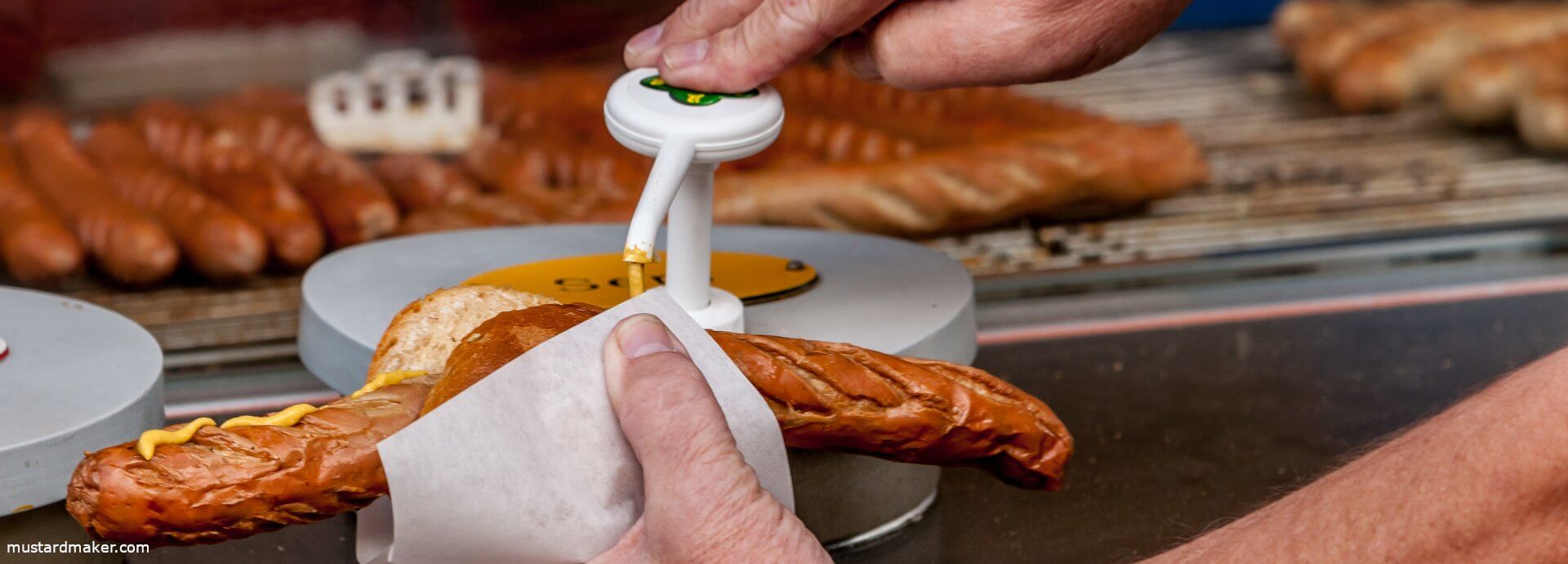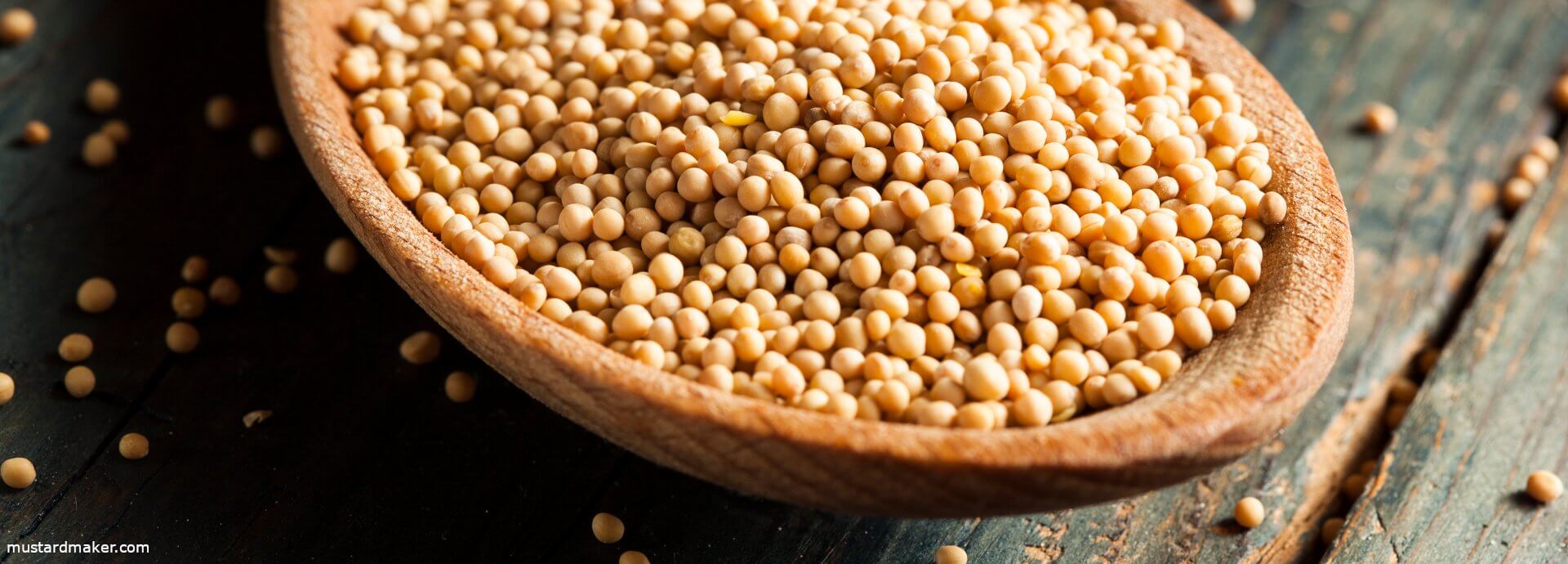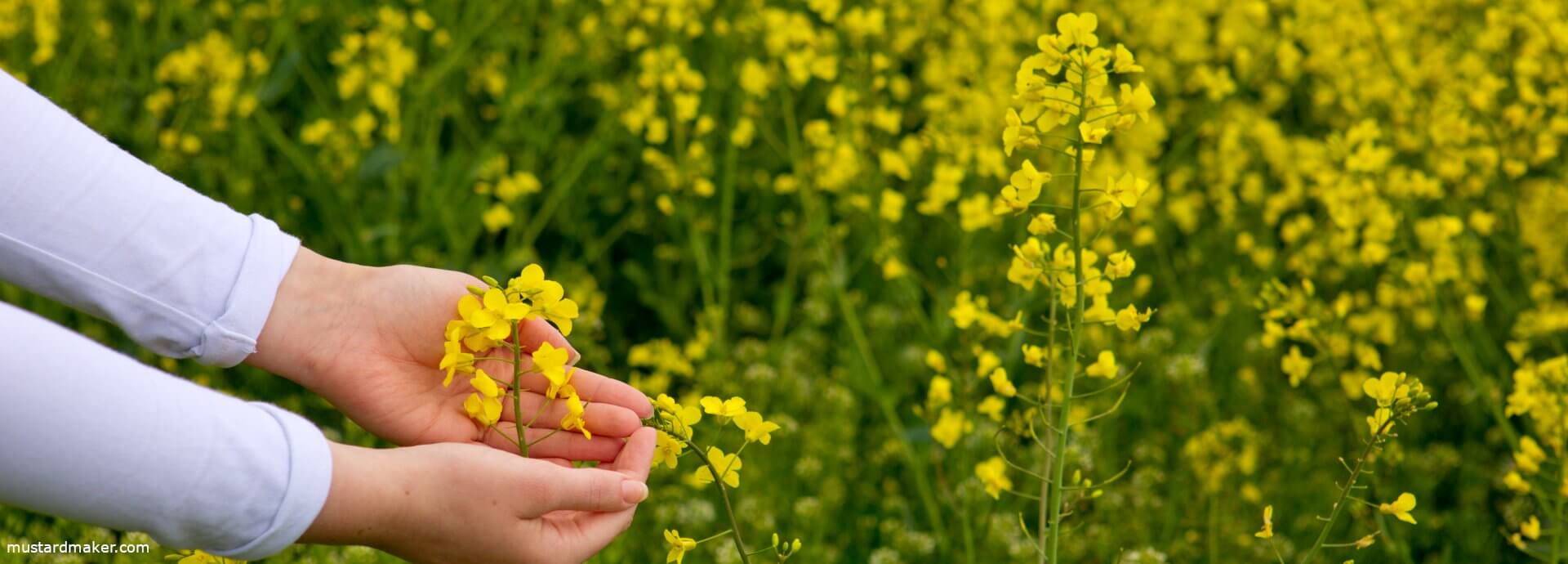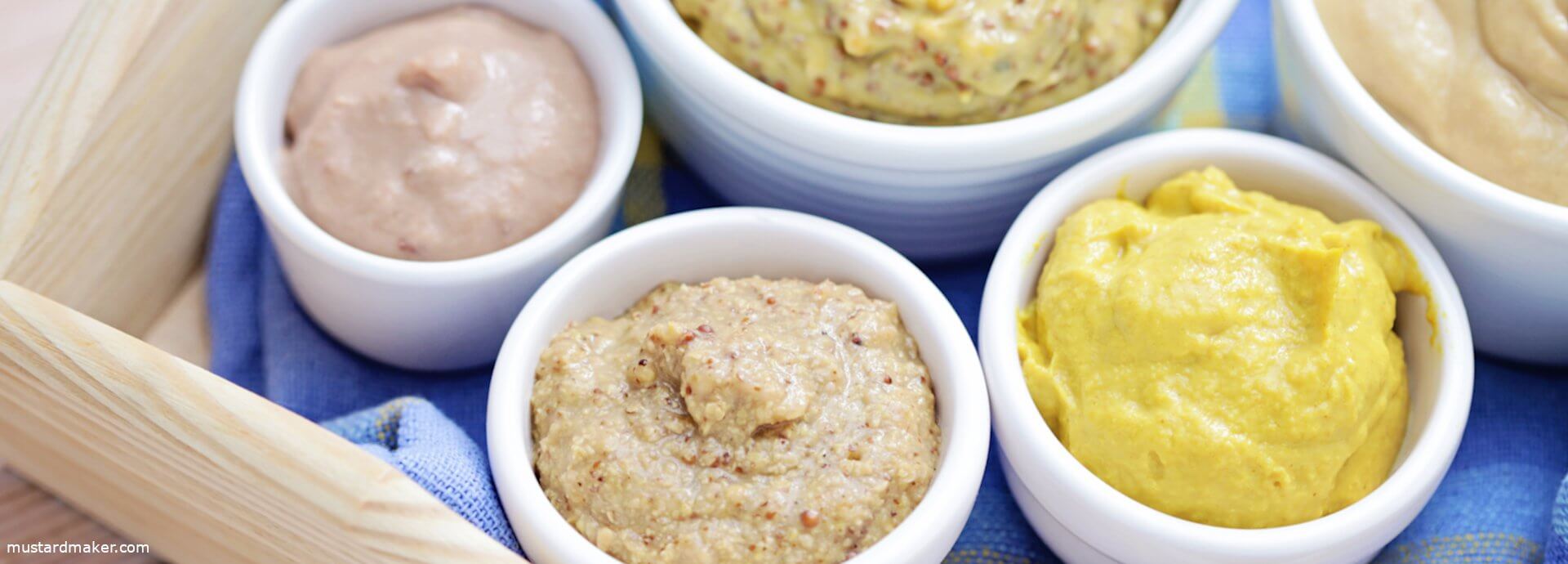You can not do without mustard
Mustard is a healthy spicy ingredient that has become indispensable in the home kitchen, because it gives many dishes the right spice. In addition to mustard from the tube, consumers are increasingly focusing on homemade mustard. But what types of mustard are there and how is mustard made in the home kitchen? Here you can find out everything you need to know about mustard. Become a mustard expert!

Table of Contents
Mustard is used in cooking as well as for a wide variety of internal and external ailments. Recent studies suggest that mustard could also be used for cancer prevention. However, research here is still in its early stages. In the meantime, you can grow and enjoy mustard without worry. Well-known mustard varieties include white mustard (Sinapis Alba), black mustard (Brassica nigra), brown mustard (Brassica juncea), green mustard and yellow mustard.
Not every variety of mustard is grown today, but mustard from the tube or in the jar consists mainly of yellow mustard / white mustard, brown mustard or black mustard. At the same time, white mustard has a mild flavor. White mustard and brown mustard are mixed when the mustard paste should be sharper. Brown mustard and black mustard are mixed for spicy mustard. Sareptasenf, the Romanian brown mustard, with a particularly mild flavor, is worth mentioning. Indian mustard is consumed as a vegetable. The mustard oil is used for cooking.
Senf, Senef und Mostarda
The current name for mustard is derived from the Old High German “Senef”. In Latin or Greek, the name for mustard is sinapis or senape and sinapi. In France mustard was called moutarde, newly mustard, in Spain mosataza, Portuguese mostarda. These names go back to the use of young wine in the production of mustard, which was previously called must. The production of mustard tests also varies from country to country. For example, mustard in England is made using the Coleman method, in which the mustard seeds are ground several times and flour is added. Dijon mustard is made in France using a patented method. The finest mustard can be found in mustard manufactories.

Mustard: 3000 years old mustard art
Mustard was already known in China 3000 years ago. Already the Romans and the Egyptians grew mustard. Mustard seeds were already ground by the Romans in the 4th century and mixed with olive oil, vinegar and honey. Grape juice with mustard seeds was currently a popular drink. Traders brought mustard to Central Europe in the 8th century. At that time mustard was especially valued as a pickling spice and mustard was said to have a potency-increasing effect. Even then it was known that mustard stimulated the production of saliva and digestive juices in the stomach. Fatty foods became more digestible.
Mustard from monasteries and vineyards in Germany
Initially, mustard was cultivated in monasteries and wine-growing areas, because wine (acetic acid) was needed to preserve mustard. Enough sour wine had the wineries available. Charlemagne ordered the cultivation of mustard in herb gardens in 795. This made mustard financially affordable for the poorer population and it spread throughout Europe. In the 15th century, the Pope appointed a “Great Papal Mustard Keeper,” so great had the importance of mustard become. In the beginning, mustard was so precious that it was presented as a gift at a banquet. In 1643, King Louis Xl granted a mustard monopoly to the city of Dijon. He is said to have always carried a pot of Dijon mustard with him on his travels. He even gave mustard its own coat of arms. Even today, Dijon mustard is considered to be of very high quality. Even the Russian Tsarina Catherine II loved the spicy paste from Dijon and in the Urwerk of all cookbooks, in the “Viandier”, can still be read numerous recipes with mustard.
What the Dijon mustard for France is the Düsseldorf mustard for Germany. Kastellan Bergrath sold genuine Düsseldorf mustard 200 years ago and Theodor Esser built the first mustard factory in Germany in Düsseldorf in 1726. This made the monopoly position for mustard production in France obsolete. Mustard arrived in England in the course of colonization. With colonization, however, mustard became less and less important as Asian spices gained in importance.
The mustard plant
Mustard is an inconspicuous plant with yellow flowers, which is often confused with rapeseed. It does not make great demands on its location and grows as a weed almost everywhere. Mustard belongs to the cruciferous family. White mustard grows 30 cm to 70 cm high. Black mustard can grow over a meter high. Mustard is grown in hussain fields and is popular as an intercrop in addition to producing mustard seeds in agriculture. Fallow land is planted with mustard against the leaching of mineral nutrients and mustard as green manure is planted.

Mustard grows as a weed almost everywhere
Mustard is a fast growing plant. The mustard seeds grow in pods, which are harvested shortly before maturity and laid out in the field to dry. The mustard seeds are obtained by threshing. After that, the mustard seeds have to dry again. The essential oils are responsible for the pungent taste of the mustard seeds. However, the pungency only comes out when the ground mustard seeds come into contact with water. The essential oils are also responsible for the health effects. As a chest compress for coughs, they have an expectorant effect, and Sal’s mustard foot bath promotes circulation. However, mustard can also irritate the skin. Therefore, caution is advised for internal and external use.
The mustard seeds
Depending on the mustard variety, the mustard seeds are 1.0 mm to 2.5 mm in size. Their shape is spherical with a beige color. But there are also mustard red-black or mustard black-brown mustard seeds. Where the seedling is located in the mustard seed, there is a small bump on the sphere. The cotyledons are also already in the mustard seed. They occupy the largest part of the mustard seed and are particularly fatty. The oil content is between 25 to 35 percent.
Mustard oil is tasteless
The yellow mustard oil is tasteless. It is either removed during the production of mustard or processed with it. Mustard oil contains toxic isothiocyanates in bound form as glucose enolates. If mustard oil is used for cooking, it must first be heated to the smoke point and cooled again. If it is not removed during mustard production, it acts as an antioxidant to prevent a loss of flavor quality.
Light spoils the color and taste of mustard
Mustard contains many proteins. These ensure that the mustard flour can absorb up to four times its amount of water. Mustard seeds do not contain starch. White and yellow mustard also form mucilage when the mustard seeds soften. These do not impair processing. The ingredient myrosinase releases the pungent mustard oils when in contact with moisture. In white mustard, this is sinalbin. In black mustard, sinigrin. Both substances prevent the occurrence of bacteria. Sinigrin also irritates the lacrimal glands with its pungent odor. To keep all the ingredients, mustard must be stored in a cool, dark place. Light spoils the color and flavor, and heat causes mustard to lose its flavor. Torn mustard belongs in the refrigerator. It will keep this way for up to six months. Mustard homemade and stored in a clay pot in a cool, dark place, keeps for up to two years without losing much of its flavor.

Various types of mustard
Mild table mustard, medium-hot delicatessen mustard and hot Lion or Dijon mustard are available in stores. In addition, mustard is available in a wide variety of flavors. Is homemade mustard worth it? We think yes, because mustard homemade had a completely different taste than industrial mustard, which is usually added horseradish for sharpness. Mustard homemade does not contain flavors and preservatives like industrial mustard. Making mustard yourself is not difficult. You just need some time, because mustard must mature during its preparation to develop the necessary sharpness. Mustard is always made from mustard flour or mustard paste.